Debate Kit: Are ‘No-Kill’ Policies Killing Animals?
Responding to the companion animal overpopulation crisis is a hot topic in classrooms and among members of the public. We know that many schools assign debates on topical issues in order to help their students learn to speak and write persuasively, develop research skills, and recognize the various sides of a controversial or multifaceted issue—and the question of how animal shelters can reduce animal suffering while managing an influx of unwanted cats and dogs is certainly such a topic. This debate kit has a list of resources that can be shared with students to help them make the argument that “no-kill” sheltering policies have unintended consequences and increase animal suffering—and that a socially conscious sheltering model provides greater benefits to animals and the rest of the community.
Resolved: “No-kill” policies are ineffective, harmful to animals, and dangerous to public health, and a socially conscious sheltering model is the most responsible and humane way to reduce the suffering of the victims of the homeless-animal crisis.
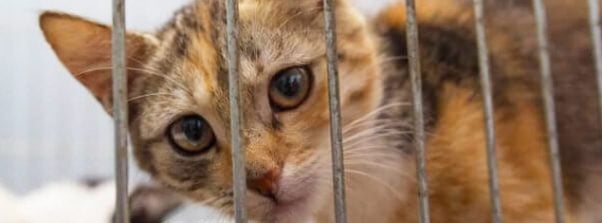
MAKE AN ARGUMENT
Animal shelters take in more than 6 million animals every year, sometimes because their guardians can’t afford euthanasia services or extensive care at a veterinary hospital. Of the millions of animals who enter shelters each year, about half must be euthanized for humane reasons, including because no suitable homes exist for many of them. But while the number of animals admitted to and euthanized at animal shelters every year appears to be declining, the core problem of animal homelessness remains.
Each year, only around 10% of the at-large homeless animal population is admitted to animal shelters. This means that on any given day in the U.S., an estimated more than 60 million homeless dogs and cats are struggling to survive on the streets. Dogs and cats are domesticated animals, who rely on humans to meet their needs for food, water, veterinary care, shelter, and safety and can’t survive for long on their own—so homeless dogs and cats spend their time struggling to survive, often in fear and discomfort, before their lives are finally cut short. They’re vulnerable to attacks by other animals and cruel people, injuries from cars, and contagious diseases. Simple infections or parasites left untreated can become deadly and cause immense suffering. Many cats and dogs freeze to death in the winter and suffer from heat exhaustion during the summer. They struggle to find adequate food and clean water. And when they’re abandoned on the streets, many reproduce, which brings even more homeless animals into the world and perpetuates the cycle of overpopulation—and this puts both animals and public health at risk. This overpopulation crisis is the result of people’s failure to spay and neuter their animal companions, allowing them to bring more dogs and cats into a world that is not prepared to care for them—and animals are suffering and dying as a result.
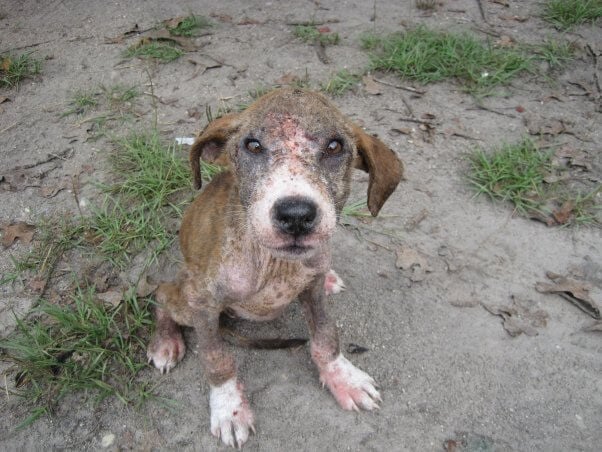
These tens of millions of homeless animals are in danger, as there are simply not enough loving homes available and shelters cannot humanely house and support all of them for their entire lives—they would be forced to live in cramped cages or kennels for years, lonely and stressed, and other animals would have to be turned away because there would be no room for them. Unfortunately, a growing number of animal shelters do exactly that. Many shelters have begun to turn many or even most animals away—or have started to require appointments and fees to discourage people from taking unwanted or homeless animals to their facilities. These shelters operate under fraudulently termed “no-kill” policies, which are often the result of pressure to increase “save rates.”
“No-kill” policies are often “turn-away” policies, and they always result in more homeless animals and more suffering. When shelters refuse to euthanize animals in order to make themselves more appealing to donors and others, they often refuse entry to most animals seeking shelter—those deemed too old, unadoptable, unsocialized, or unappealing are often turned away because they’re harder (or, in some cases, impossible) to find homes for. Even young, healthy animals are commonly turned away from full “no-kill” shelters. This leaves them either in the hands of people who can’t afford their care or just don’t want them (and who often neglect, abandon, or even kill them in cruel ways) or on the streets, where they breed, starve, and inevitably die alone of illness or injury. In the best-case scenario, these animals could end up in a socially conscious shelter, where they could be relieved of their suffering, receive veterinary care, be assessed for the potential for adoption, or be afforded a dignified death via painless euthanasia.
Additionally, some “no-kill” shelters and “rescues” are run by hoarders who keep animals caged for their entire lives. There, animals are often forced to live amid their own waste, with no opportunity to go for walks, breathe fresh air, or receive affection. There are countless cases involving “no-kill” animal shelters and “rescues” that have made headlines after being raided. The animals in these facilities endured a fate far worse than euthanasia, which is painless.
“No-kill” policies don’t prevent animals from dying. They simply leave them to die elsewhere—often miserably—and avoid practicing euthanasia by warehousing animals in cages indefinitely, referring them to open-admission shelters, or otherwise turning them away. “We have at least 500 calls per week asking us to take this dog or cat. … We can’t do that,” said Michael Mountain, founder and past president of “no-kill” group Best Friends Animal Sanctuary, whose slogan is “Save Them All.” That adds up to 26,000 animals turned away annually by just one group!
That’s why a growing number of shelters, agencies, and communities nationwide are rejecting these misleading “life at any cost” policies. Instead, they are embracing “socially conscious animal sheltering“—a humane, responsible model that puts the focus on animals’ quality of life instead of on numbers. The objective of socially conscious sheltering is to create the best outcome for all animals by treating them respectfully as individuals and alleviating suffering. This means having an open-admission policy and never turning an animal away or refusing to help, regardless of public pressure to raise “live release” statistics. Socially conscious open-admission shelters make every effort to place healthy animals in safe and well-vetted permanent homes, provide badly abused and neglected animals who cannot be rehabilitated with a peaceful end of life via painless euthanasia, and work to prevent more homeless animals from being born in the first place by performing spay/neuter surgeries.
“No-kill” or “limited-admission” shelters do not provide a solution to the homeless-animal crisis—but there is a solution. Animal overpopulation is 100% preventable if people stop buying dogs and cats from breeders and pet stores and routinely have them spayed or neutered. This prevents millions of animals from being born into an already overpopulated world each year and being subjected to a life of suffering on the streets and at the hands of cruel people.
BECOME AN EXPERT
Use the resources below to research the reasons why socially conscious sheltering is necessary and compassionate in light of the animal overpopulation crisis and to prepare logical arguments against fraudulently termed “no-kill” policies.
- Animal Companion Issues: Euthanasia
- Animal Rights Uncompromised: Euthanasia
- Animal Rights Uncompromised: ‘No-Kill’ Shelters
- The Biggest Threat to Homeless Animals Today: The Betrayal of ‘No-Kill’ Sheltering
- Companion Animal Overpopulation
- The Deadly Consequences of ‘No-Kill’ Policies
- Dogs Run Over, Cats Thrown in the Trash: Victims of ‘No-Kill’ Policies
- Euthanasia: The Compassionate Option
- ‘No-Kill’ Policies Slowly Killing Animals
- Oh, So You Work at a Kill Shelter?
- Waving the Feel-Good Flag of ‘No-Kill’ Shelters
- What Is an Animal Shelter? Let’s Break It Down
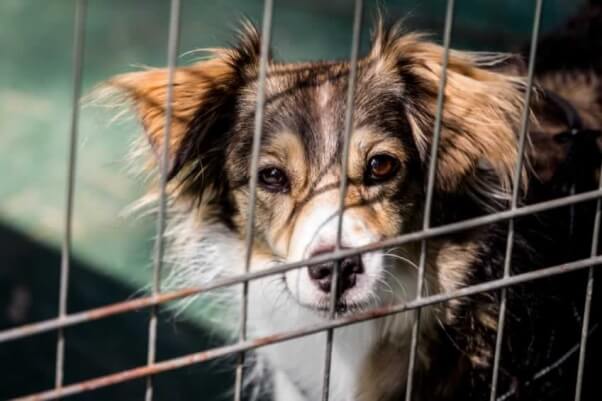
BUILD YOUR CASE
Use the resources below to gather evidence and examples to support your position that “no-kill” policies are ineffective and result in additional harm to animals and that socially conscious sheltering is the humane model.
Scholarly Articles, News Reports, and Investigative Analysis
- The Biggest Threat to Homeless Animals Today: The Betrayal of ‘No-Kill’ Sheltering
- Has the No-Kill Movement Increased Animal Suffering?
- How ‘Saving’ Animals at All Costs Can Be a Dangerous Proposition
- Newsmonger: Euthanasia by Proxy
- ‘No-Kill’ Pits Shelter Against Shelter—and Animals Lose
- ‘No-Kill Shelters’ Have Serious Consequences
- The State of Sheltering Amid the No-Kill Revolution
- Turned Away: A Closer Look at ‘No-Kill’ Animal Shelters
- What’s Wrong With No-Kill Animal Shelters?
- When ‘No-Kill’ Policies Mean ‘Slow-Kill’ Practices
Editorials
- Are We Loving Shelter Dogs to Death?
- Cruelty of No-Kill
- Embracing Local ‘Kill Shelters’
- ‘No-Kill Shelters’ Have Serious Consequences
- Oh, So You Work at a Kill Shelter?
- Op-Ed: ‘No-Kill’ Shelters Are a Myth
- Why the ‘Clear the Shelters’ Campaign Worries Me
Statements From Shelter Workers, Veterinarians, Volunteers, and Experts
- AVMA: Euthanasia of Animals That Are Unwanted or Unfit for Adoption
- Colorado Veterinary Leaders Approve Statement Supporting Socially Conscious Animal Communities
- Cruelty of No-Kill
- Former City Vet Says Sick Animals Aren’t Being Euthanized
- Genesee County Vet: Ban on Euthanasia at Animal Shelter Is Creating More Suffering for Animals
- How ‘No-Kill’ Shelters Kill Animals
- No-Kill Animal Shelters Are Slow-Kill Cruelties
- ‘No-Kill’ Does Not Mean No Death—It’s Often Worse
- ‘No-Kill’ Policies Slowly Killing Animals
- Why I Won’t Work at a ‘No-Kill’ Shelter
Eyewitness Investigation, News Reports, and Whistleblower Accounts
(Note to teachers: Some of the articles in this section contain graphic photos or descriptions of animal abuse and neglect.)
- Animal Shelter Turned Into a ‘House of Horrors’
- As Shelter Complaints Mounted, Animals Suffered
- Criminal Charges Possible for Former Animal Shelter Leaders
- Dropped-Off Cats Could Mean Fine for Shelter
- Exposed: Gruesome Crime-Scene Photos From a Self-Professed ‘Animal Rescue’
- Former Employee of Humane Society of Washington County Alleges Mistreatment of Animals
- Hillsborough Animal Services Director Facing Criticism, Departures
- Live Release Numbers at Hillsborough Animal Shelter ‘All Smoke and Mirrors’
- Questions Arise Over Case After Failed Inspection
- Report: Austin’s No-Kill Policy Led to Overcrowding at Animal Shelter
- Reports Surface of Aggressive Dogs Adopted From Austin Animal Center
- State May Fine Pittsylvania Pet Center up to $65,000
- Southern Colorado No-Kill Animal Shelters Struggle With Violations
- These Shocking Crime Scene Photos Are From Animal ‘Rescue’ Groups
- ‘We Are Drowning in Dogs’: Insiders Detail ‘Heartbreaking’ Conditions at Colorado Animal Shelter
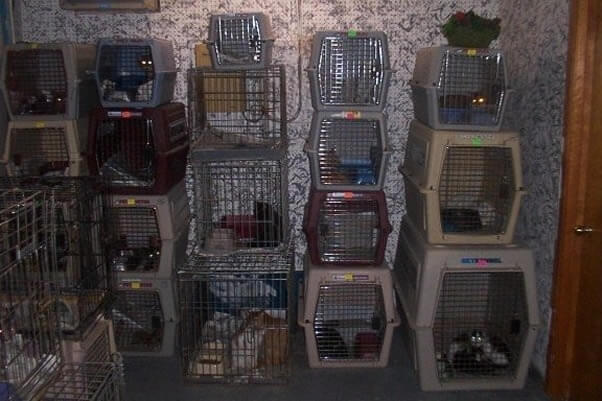
Additional Examples Showing Dangers of ‘No-Kill’ Shelters and Policies
Full shelters turning away animals:
- Animal Shelter Closes Doors to New Intakes, Cuts Hours
- Belmont County Animal Shelter Has No More Room for Cats
- Cat-pacity! Waiting List Grows at Robertson Animal Shelter
- Crowded Austin Animal Shelter Has Turned Away Some Healthy Dogs, Cats
- Greene County Animal Shelter at Capacity After Several Cruelty Cases
- League City Animal Shelter Overcrowding, No Longer Accepting Animals
- Limited Hours, No Help With Strays From Hillsborough County Pet Resources
- Overcrowding a Growing Problem in Local and Harris County Animal Shelters
- Overcrowding Limits Intake at UCAPS
- Owners Looking to Surrender Pets Are Turned Away
- Robertson County’s Animal Shelters Work to Care for High Numbers of Cats, Dogs
- SPCA Stops Taking in Cats Due to Overcrowding
- Staff at Northeast Animal Shelter Refused to Care for Local Pets
- Stokes County Animal Shelter No Longer Accepting Strays, Animal Surrenders
- Stray Hearts Animal Shelter Full, Not Accepting Dogs
- Video Shows Stray Dogs Shunned by Miami-Dade Animal Services
Animals turned away from shelters who were then abandoned or killed:
- Cheatham Co. Animal Control Looking to Identify Woman Who Dumped Kittens
- Deer Park Woman Charged After Abandoning Her Dog in Street, Prosecutors Say
- He Searched for a Shelter for His 40 Sick Cats. Then, He Was Arrested
- Kitten Hit by Car After Being Abandoned at Animal Shelter Dies
- Man Won’t Face Charges in Dogs’ Clinton County Deaths
- No More Room; 10 Cats, Dog Dumped After Shelter Turns Owner Away
- Odessa Puppies Locked in Cage and Dumped at Landfill, Near Dumpster
- Parish Shelter Refuses Animals in Cruelty Case
- Police Investigate After Pit Bull Owner Tried to Give to Shelter Dies
- SAPA! Staff Members Treating Puppies Abandoned in Dumpster on West Side
- Springfield Woman, Charged With Dumping Dog, Said She Felt It Was Only Option: Documents
- Woman Will Serve No Jail Time for Killing, Dumping 6 Puppies
- Woman Charged for Abandoning Cats at Taco Bell Drive-Thru
- Woman Seen Dumping Dogs at ACS Building After Being Previously Turned Away
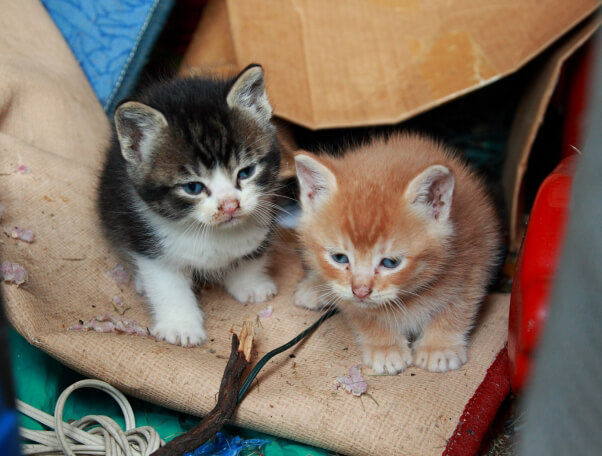
FIND SOLUTIONS
Use these resources to build a proposal that offers ways people can prevent animal homelessness in the first place and practice socially conscious animal sheltering, which ensures that animals who need help are never denied it by shelters:
- County Adopts ‘Socially Conscious Animal Sheltering’
- Death or Divorce and Your Animal Companion
- Finding Animal-Friendly Housing
- The Future Is Socially Conscious Sheltering
- Is Your Shelter Putting Out the ‘Unwelcome’ Mat for Animals?
- ‘No Kill’ No Excuse for Hoarding—Solution Is ‘No Birth’
- Planning for Your Beloved Animal Companions
- Relocating With Your Animal Companion
- Socially Conscious Animal Sheltering: A Humane, Responsible Approach
- Spaying and Neutering: A Solution for Suffering

ANTICIPATE COUNTERARGUMENTS AND PREPARE REBUTTALS
Visit the websites of groups that support “no-kill” policies and create a list of the mottos and slogans that they commonly use. Then use resources in this kit (and from your own research) to respond to those claims, anticipate counterarguments, and create rebuttals. Many “no-kill” shelters make claims about “saving all animals” and vilifying those that euthanize—while their policies cause even more animals to suffer and die. (Because of the severity of the homeless-animal crisis in the U.S., many of these animals suffer a fate far worse than painless euthanasia.) In order to avoid euthanizing any animals and to meet required “live release” rates, “no-kill” shelters force animals to live in cages until they die, adopt out dangerous dogs or force them to live indefinitely in shelters because of release requirements, refuse to take in lost or homeless animals from the community because their cages are full of behaviorally or medically challenged animals unable to be placed in homes, and risk animals’ welfare as they exceed the limits of their ability to provide quality care.
ADDITIONAL RESOURCES
Websites and Programs
- AVMA: Euthanasia
- None of Us Will Have a Death This Good
- PETA Saves
- Socially Conscious Sheltering: Understanding the Current Crisis in Animal Welfare
Infographics and Photos
- Helping Dogs and Cats in a Big Way (Infographic)
- These Shocking Crime Scene Photos Are From Animal ‘Rescue’ Groups (Warning: graphic content)
- Understanding PETA’s Animal Shelter (Infographic)
Film and Videos
*****
Have students use the curated content in this debate kit to prepare an argument stating why “no-kill” policies are ineffective and harmful to animals and why a socially conscious sheltering model is the most responsible and humane way to reduce suffering. These resources will assist students in supporting their position using scientific, ethical, and anecdotal arguments.
Want free educational posters and stickers for students to use during their debates? E-mail us at [email protected].
Do your students need to conduct an interview as part of their research? PETA staff members are available to speak with students via phone, Skype, or e-mail and to answer questions about our stance on the companion animal overpopulation crisis and socially conscious animal sheltering. Have students e-mail us directly at [email protected]—or if you’d like to contact us on their behalf, please fill out the form below and we’ll arrange for them to speak with a representative.
By submitting this form, you’re acknowledging that you have read and agree to our privacy policy and agree to receive e-mails from us.





